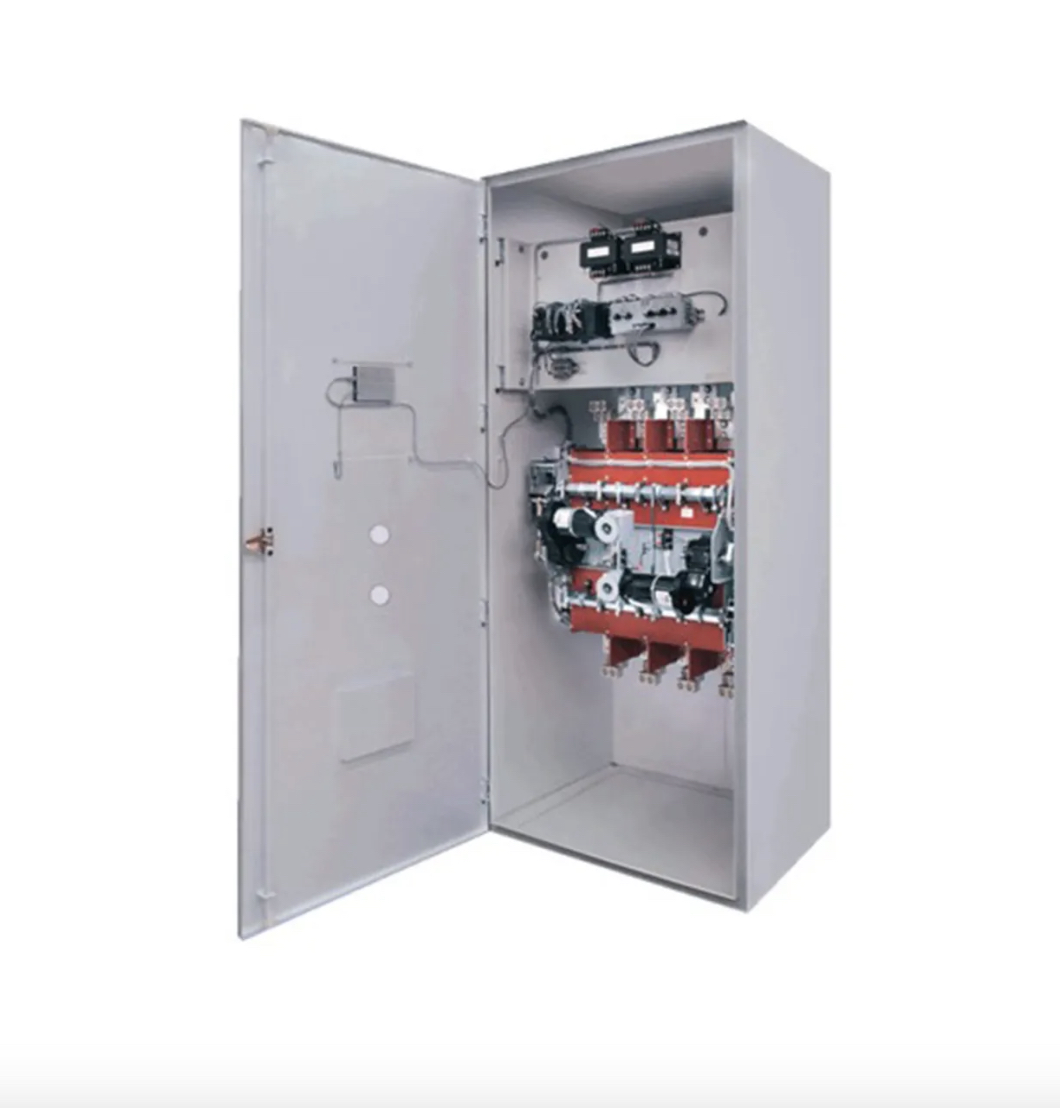Automatic Transfer Switches: Ensuring safety, reliability, and minimal downtime
An Automatic Transfer Switch (ATS) is a means of transferring power between a primary electrical power source and an alternative source (such as a generator) in the event of power failure. Automatic Transfer Switches are critical for the smooth, consistent operation of facilities like hospitals and factories that require near-constant uptime. While Manual Transfer Switches require an operator and pose a variety of safety and time management concerns, an ATS can sense critical shifts in electrical power — such as the loss of the power source, or when the voltage and frequency vary from a preset limit — and automatically transfer power to the alternate source. Additionally, an ATS can detect when power is restored in the primary source, then retransfer the load back.
Safety
Tried and true design and construction is crucial to ensure the safety, reliability, and minimal downtime of an ATS. This article will focus on Open-Transition Transfer Switches, where the switch breaks connection with one power source before making connection with another (also known as “break-before-make” design).
One notable benefit for Open-Transition Transfer Switches over Closed-Transition Power Sources are External Manual Operators (EMOs), which are only available with the former. The EMO provides unparalleled ease of operation and safety measures not available in Closed-Transition Transfer Switches. EMOs allow you to transfer switches safely if automatic transfer is not available, such as during a technological malfunction or controller failure, minimizing arc flare concerns.
 Design and Construction of Switching Mechanism
Design and Construction of Switching Mechanism
For the safest and most consistently reliable manual transfer, three general requirements must be met: a fast transfer of power, protection against the danger of arc flashes, and protection against contact erosions. High quality materials and segmented ATS contact designs are an investment in durability and reliability, and ensure your switching mechanisms withstand the test of time.
Fast transfer of power
As with any technological component, there are occasional automatic circuitry or programming failures. When this occurs, a manual transfer of power is necessary; an expedient one will ensure limited downtime in the facility the transfer switch is servicing.
With some ATS designs, cabinet doors must be opened to perform manual transfers of the switch. Some even have a disable switch inside the enclosure, which must be accessed to disconnect the automatic controls. Recent safety requirements say that the ATS is to be disconnected from the two power sources in order for manual transfers to be performed safely. This extra step adds more time to the transfer process. It also requires additional training to ensure the safety of operators throughout. Optimum open transfer switches are equipped with EMO (external manual operator) capability, allowing you to operate the switch through the cabinet door. This effectively eliminates the need to open the door to perform a manual transfer, thereby cutting down on steps to the transfer of power and ensuring speed in these crucial moments.
Protection against arc flashes
Arc flash safety procedures require the cabinet door to stay closed. Not only do External Manual Operators ensure this safety measure is met, but materials differences can further cut down on potential for arc flash danger.
Many transfer switches use electromagnetic solenoids that are directly linked to switching contacts. If an operator sticks a transfer handle into a solenoid, the contacts open and close at the speed of the operator’s hand motions. The slower the motion, the higher the arc flash danger. On the other hand, EMO’s drive a gear box, which, in turn, drive an over-center mechanism that operates with an action similar to a mouse trap. The opening and closing speed of the contact does not change depending on operator motion. This design affords you an additional layer of safety, offering consistent speed and pressure for the opening and closing of the contacts.
The right materials
Look for switching contacts that are machined (not cast, forged, or stamped) from solid extruded copper, ideally with tungsten arcing tips. Linkages crafted from sturdy anodized steel rods machined (not stamped or riveted) and bus bars made from solid copper ensure smooth, safe function.
A microprocessor that offers comprehensive control of the switch can be incorporated into building management systems, a central office display, or web-enabled, making it fully integrable to existing processes. Clear signifiers can eliminate complicated diagnostic procedures, and allow operators to act quickly in the event of a power emergency.
An EMO provides a simple means for manual operation capability. EMOs are necessary when the Automatic Transfer System fails, or when completing ATS inspections. Ensuring the enclosure door remains closed means safer operation and protection from arc flash injury, reducing need for additional safety protocols and training, and cutting facility downtime.

Conclusion
Automatic Transfer Systems are critically important components of facility infrastructure. Under normal operation, they are a fast, safe, and reliable means of keeping facilities running smoothly. When designed and built with quality in mind, they are robust and resilient to corrosion. Safety and enhanced operational features offer an additional layer of reliability for fast, easy, and safe manual operation when necessary.
 John Stark is Marketing Communications Supervisor at Russelectric, A Siemens Business that provides high-integrity power control solutions for mission critical applications in the healthcare, information technology, telecommunication, water treatment, and renewable energy markets.
John Stark is Marketing Communications Supervisor at Russelectric, A Siemens Business that provides high-integrity power control solutions for mission critical applications in the healthcare, information technology, telecommunication, water treatment, and renewable energy markets.
Russelectric | www.russelectric.com
Author: hn Stark
Volume: 2023 September/October









